
É uma das sete colinas de Roma e faz parte do seu conjunto arqueológico mais relevante, juntamente com o Coliseu e o Fórum Romano. Uma vez mais utilizámos o Roma Pass para entrar e o acesso ao Monte permite também visitar o Fórum.
Para nós a visita ao Palatino representou uma agradável surpresa, entre as sombras proporcionadas pelo seu abundante arvoredo, a espantosa vista que proporcionava para outros monumentos como o Circo Massimo, o Forum Romano e até o Coliseu, para além de toda a sua riqueza histórica porque afinal aqui viviam os imperadores de Roma, tudo somado temos uma das melhores experiências da cidade.
It is one of the seven hills of Rome and is part of an archaeological group of high importance, along with the Colosseum and the Roman Forum. Once again we used the Roma Pass to get in and access to Monte that also allows you to visit the Forum.
For us the visit to the Palatine was a pleasant surprise, the shadows given by its abundant trees, the amazing sight that provided to other landmarks such as the Circus Maximus, the Roman Forum and the Colosseum, beyond all its historical richness because after all here lived the emperors of Rome, all in all we have had one of the best experiences in town.
For us the visit to the Palatine was a pleasant surprise, the shadows given by its abundant trees, the amazing sight that provided to other landmarks such as the Circus Maximus, the Roman Forum and the Colosseum, beyond all its historical richness because after all here lived the emperors of Rome, all in all we have had one of the best experiences in town.
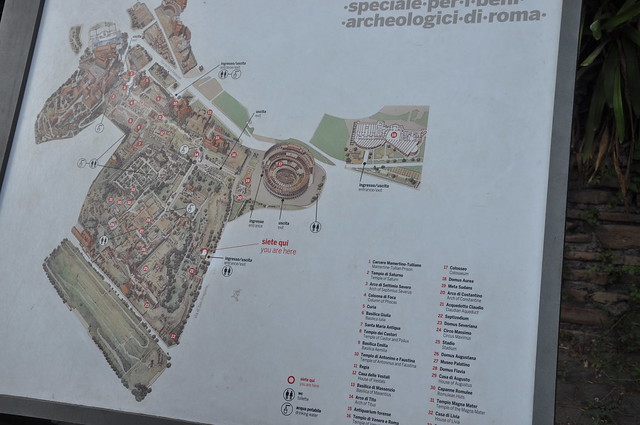
Caminhando pelo lado esquerdo depois de entrar chegamos ao Estádio, que faz parte do complexo Severiano, cuja construção se deve ao imperador romano Septímio Severo. Não está clara a utilização deste espaço, o nome estádio indicaria que era utilizado para a prática de desportos mas as placas do local referem-no como um jardim do palácio do imperador. Ainda assim, alguns guias explicam que servia as duas funções.
Junto a ele estão as ruínas da Domus Severiana e das termas.
Walking through the left after the entrance we arrived at the Stadium, which is part of the Severiano complex, whose construction is due to the Roman emperor Septimius Severus. It is not clear the use of this space, the stadium name would indicate that it was used for sports but the signs of the site refer to it as a garden of the palace of the emperor. Still, some guides explain that it served both functions.
Next to it there are the ruins of Domus Severiana and spa.
Next to it there are the ruins of Domus Severiana and spa.



Nessa zona um miradouro permite-nos ver o Circo Massimo, uma grandiosa arena utilizada para eventos de entretenimento do povo romano entre eles a popular corrida de quadrigas. E do mesmo local, olhando para a direita podemos ver ao longe a cúpula da Basílica de S. Pedro no Vaticano.
In this are a viewpoint allows us to see the Circus Maximus, a grand arena used for entertainment events of the Roman people including the popular chariot race. And from the same spot, looking to the right we can see in the distance the dome of the Basilica of S. Peter in the Vatican.
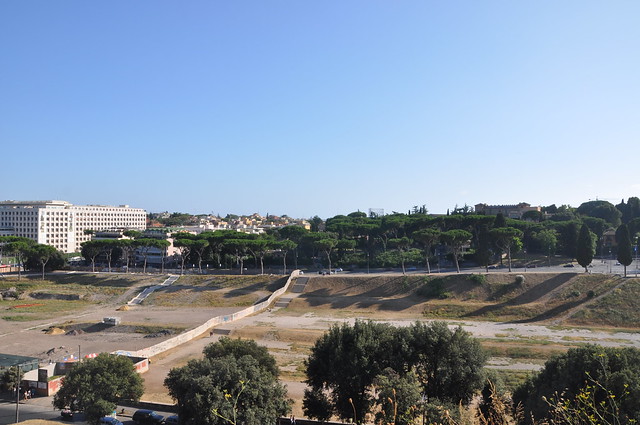
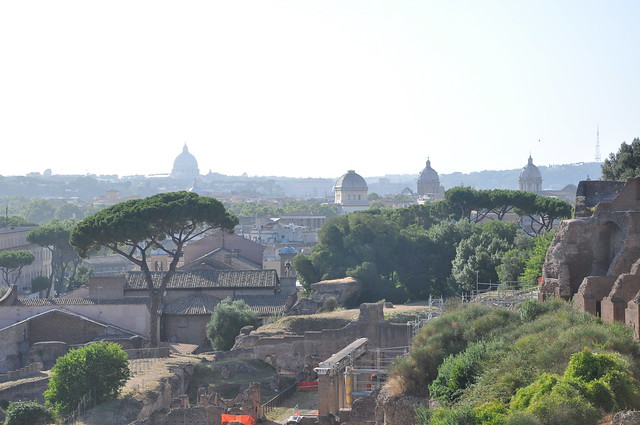

Seguimos para a Domus Augustana que está junto ao Museu Palatino. Era o palácio privado do imperador Augustus e tinha vista para o Circo Massimo. Foi construído em dois níveis para seguir a inclinação do monte e era provavelmente o seu maior edificio.
We went to the Domus Augustana which is close to the Palatine Museum. It was the private palace of Emperor Augustus and had a view of the Circus Maximus. It was built on two levels to follow the slope of the hill and was probably the largest building.
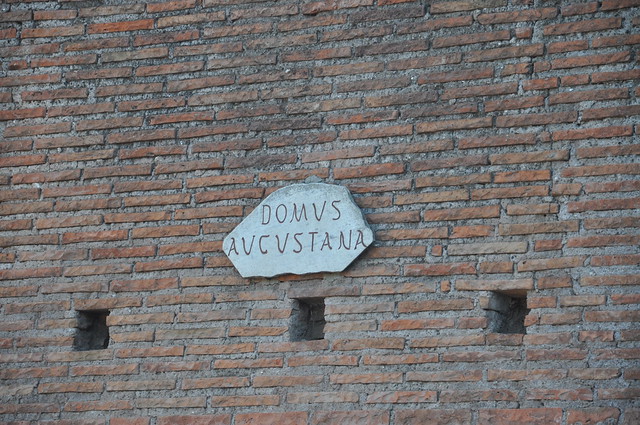
Ao lado estava a Domus Flavia, a parte pública do palácio imperial e onde estaria por exemplo a sala do trono. Ao centro podemos ver uma parte plana com uma construção octagonal, era a fonte localizada no pátio principal e o ponto mais central do palácio. Á sua volta estariam as colunas que fazem parte do Peristilo e ainda se podem ver os seus vestigios.
Beside it there's the Domus Flavia, the public part of the imperial palace and where it would be the throne room. At the center we see a flat area with an octagonal construction, a fountain was located in the main courtyard and it was the most central point of the palace. Around it the columns that are part of the Peristyle and you can still see their pieces of it.
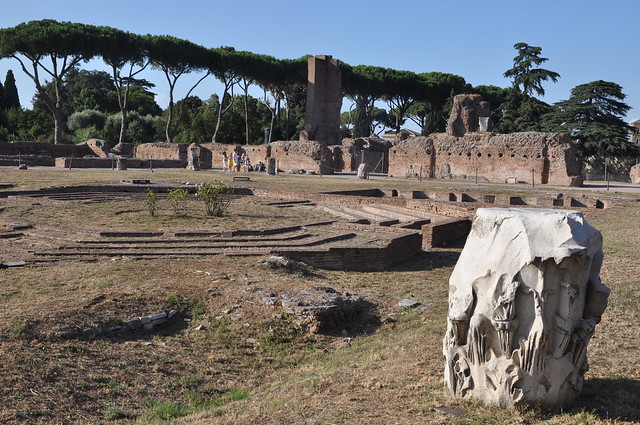
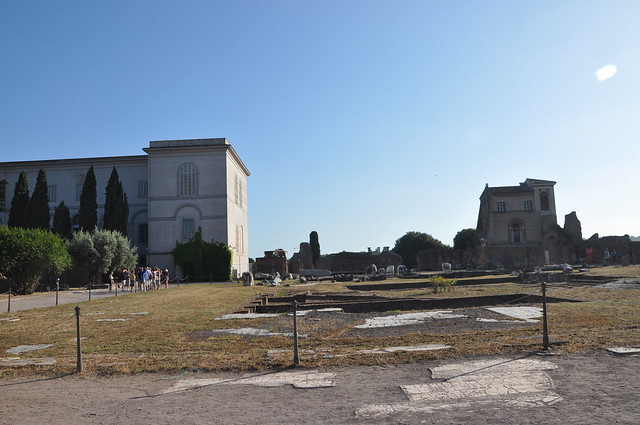
Podemos depois ver vestígios das Casas de Augustus e Livia. Mais adiante chegamos á Horti Farnesia, um elegante jardim construído no século XVI por cima da Domus Tiberiana. Foi o Cardeal Alessandro Farnese que ordenou a construção daquele que poderá ter sido um dos primeiros jardins botânicos da Europa.
We can then see traces of the Houses of Augustus and Livia. Further we arrive at Horti Farnesia, an elegant garden built in the sixteenth century over the Domus Tiberiana. It was Cardinal Alessandro Farnese who ordered the construction of that which could have been one of the first botanical gardens in Europe.


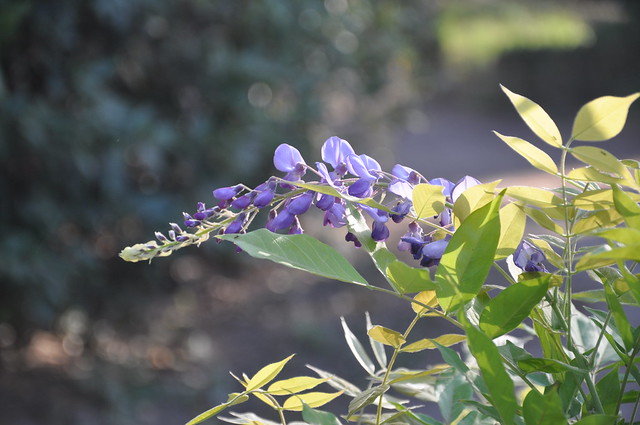
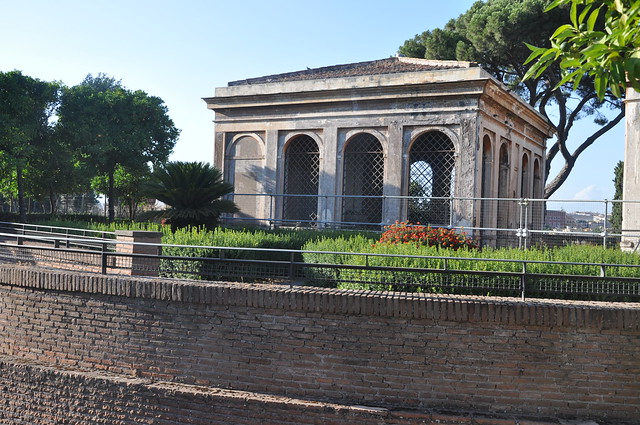
Junto a ele temos outro miradouro que oferece uma excelente vista para o Fórum Romano.
Next to it another viewpoint that offers an excelent view of the Roman Forum.
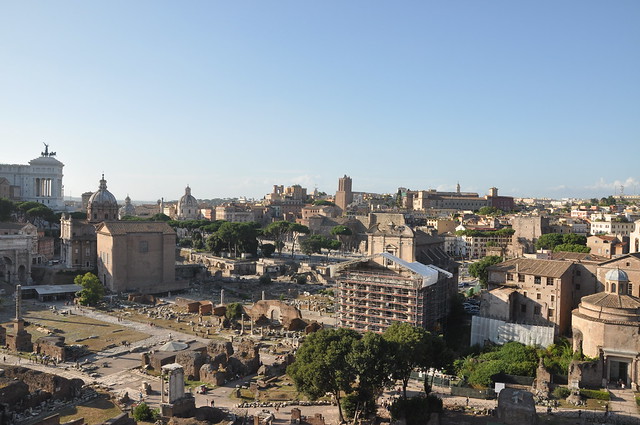

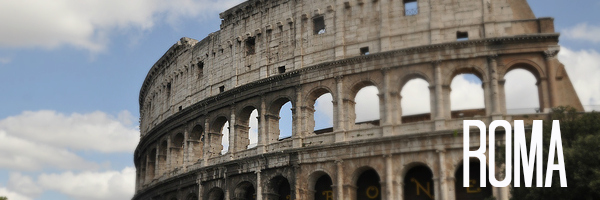
Sem comentários:
Enviar um comentário